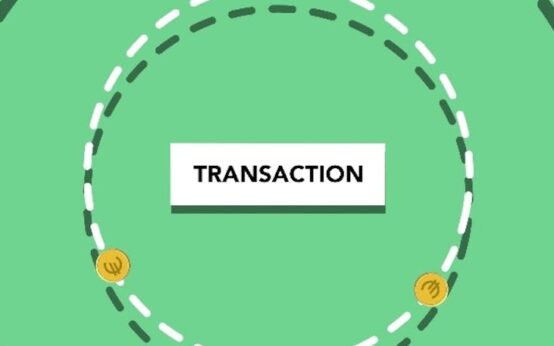The Role of Verifiable Credentials in Professional Networking
In today’s interconnected world, professional networking is more critical than ever. But traditional methods often rely on trust and subjective assessments, leading to inefficiencies and potential misrepresentations. Enter verifiable credentials – a game-changing technology poised to revolutionize how we connect, share information, and build trust in the professional sphere. Think of it as a digital notary for your skills and achievements, making them instantly verifiable and readily shareable.
Key Takeaways
- Verifiable credentials offer a secure and trustworthy way to share professional achievements and qualifications.
- They streamline networking by providing instant verification of skills and experience.
- This technology empowers individuals to own and control their professional identity.
- Verifiable credentials can significantly reduce fraud and misrepresentation in the professional world.
What are Verifiable Credentials?
Simply put, verifiable credentials are digital representations of real-world credentials like university degrees, professional certifications, or even work experience. They are cryptographically secured and tamper-proof, ensuring the information they contain is authentic and hasn’t been altered. Imagine having a digital version of your diploma that anyone can instantly verify, eliminating the need for cumbersome background checks or lengthy verification processes.
How Do Verifiable Credentials Work?
Verifiable credentials work on a decentralized system often built on blockchain technology. This system involves three key players: the issuer (e.g., a university), the holder (e.g., the graduate), and the verifier (e.g., a potential employer). The issuer creates the credential, the holder stores and manages it, and the verifier confirms its authenticity. It’s like a digital handshake, confirming the validity of the information presented.

The Benefits for Professional Networking
Verifiable credentials offer numerous advantages for professional networking:
- Enhanced Trust and Transparency: Say goodbye to questionable resumes and LinkedIn profiles. Verifiable credentials provide instant, irrefutable proof of your qualifications.
- Streamlined Networking: Forget chasing down references and waiting for confirmations. With verifiable credentials, you can share your verified achievements instantly, saving time and effort for everyone involved.
- Empowered Individuals: You own and control your professional identity. You decide what credentials to share and with whom, putting you in the driver’s seat.
- Reduced Fraud and Misrepresentation: The cryptographic security of verifiable credentials makes them incredibly difficult to forge, minimizing the risk of fraudulent claims and boosting overall trust in the system.
Real-World Applications
The potential applications of verifiable credentials in professional networking are vast:
- Recruitment and Hiring: Imagine instantly verifying a candidate’s qualifications, eliminating the need for lengthy background checks and speeding up the hiring process.
- Skill-Based Matching: Find the perfect candidate or project based on verified skills and experience, not just keywords on a resume.
- Continuing Professional Development: Track and showcase your professional development achievements with verifiable credentials, demonstrating your commitment to lifelong learning.
- Building Trust in Online Communities: Establish credibility and build trust within online professional communities by showcasing your verified expertise.
The Future of Professional Networking
Verifiable credentials are not just a futuristic concept; they are actively being implemented across various industries. As adoption grows, we can expect to see a significant shift in how we network, connect, and build trust in the professional world. Wouldn’t it be amazing to have all your professional accomplishments at your fingertips, readily available to share with potential employers or collaborators?
Overcoming Challenges
While the potential is enormous, some challenges remain. Widespread adoption requires standardization, user-friendly interfaces, and education about the benefits of verifiable credentials. Overcoming these hurdles will be crucial to unlocking the full potential of this transformative technology.
Conclusion
Verifiable credentials represent a paradigm shift in professional networking. They offer a more secure, transparent, and efficient way to connect, share information, and build trust. As this technology matures and becomes more widely adopted, we can expect to see a fundamental change in how we navigate the professional landscape, empowering individuals and fostering a more trustworthy and efficient ecosystem.
FAQ
What is the difference between a verifiable credential and a digital badge?
While both are digital representations, verifiable credentials are more secure and tamper-proof due to their cryptographic nature. Digital badges can be easily copied or altered, whereas verifiable credentials are anchored to a decentralized system, ensuring authenticity.
Are verifiable credentials expensive to implement?
The cost of implementing verifiable credentials varies depending on the specific platform and the scale of deployment. However, open-source tools and increasing competition are driving down costs, making them more accessible for individuals and organizations.
How can I get started with verifiable credentials?
Several platforms and organizations offer verifiable credential solutions. Researching and selecting a reputable provider that aligns with your needs is the first step. Many platforms offer user-friendly interfaces and resources to guide you through the process.
Are verifiable credentials legally recognized?
The legal recognition of verifiable credentials is still evolving. While some jurisdictions are exploring legal frameworks for digital identities and credentials, widespread legal recognition is still in its early stages.
What is the role of blockchain in verifiable credentials?
Blockchain technology often serves as the underlying infrastructure for verifiable credentials, providing a secure and tamper-proof ledger for storing and verifying credential data.



 How Venture Capital is Shaping the Crypto Industry
How Venture Capital is Shaping the Crypto Industry  Sentiment Analysis for Crypto: A Trader’s Ultimate Guide
Sentiment Analysis for Crypto: A Trader’s Ultimate Guide  NFTs: The New Key to Membership & Brand Loyalty | Guide
NFTs: The New Key to Membership & Brand Loyalty | Guide  Polkadot’s Parachain Architecture Explained Simply
Polkadot’s Parachain Architecture Explained Simply  Crypto Phishing: How to Protect Your Digital Assets
Crypto Phishing: How to Protect Your Digital Assets  Social Media on Blockchain: The Next Digital Frontier
Social Media on Blockchain: The Next Digital Frontier  How Venture Capital is Shaping the Crypto Industry
How Venture Capital is Shaping the Crypto Industry  Sentiment Analysis for Crypto: A Trader’s Ultimate Guide
Sentiment Analysis for Crypto: A Trader’s Ultimate Guide  NFTs: The New Key to Membership & Brand Loyalty | Guide
NFTs: The New Key to Membership & Brand Loyalty | Guide  Polkadot’s Parachain Architecture Explained Simply
Polkadot’s Parachain Architecture Explained Simply  Crypto Phishing: How to Protect Your Digital Assets
Crypto Phishing: How to Protect Your Digital Assets  Social Media on Blockchain: The Next Digital Frontier
Social Media on Blockchain: The Next Digital Frontier